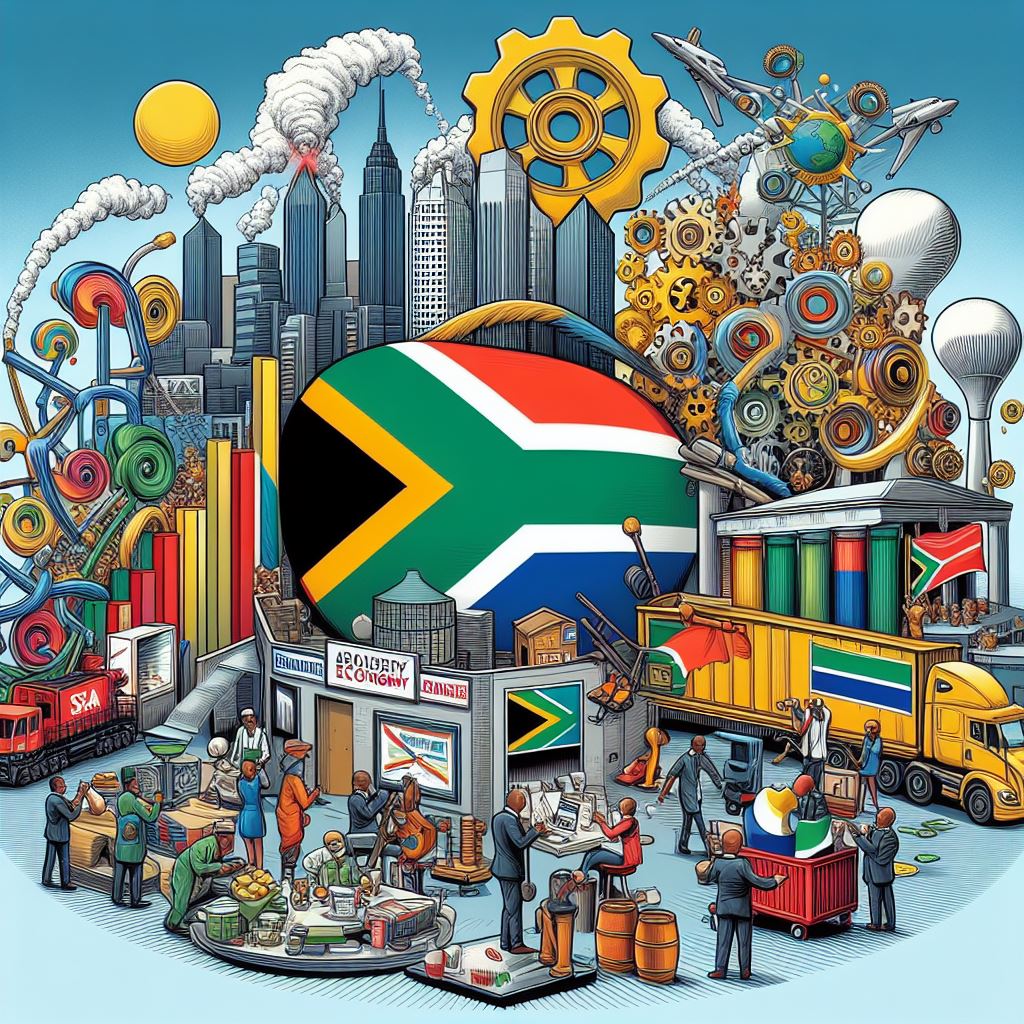The circular flow model is a fundamental economic concept that illustrates the flow of goods, services, and payments between different sectors of the economy. In the context of the South African economy, various participants interact within this model, driving economic activity and shaping the country’s economic landscape. This article identifies the five participants who interact in the circular flow model in the South African economy.

Households
Households represent one of the primary participants in the circular flow model. In South Africa, households consist of individuals and families who consume goods and services produced by businesses and the government. They also provide factors of production, such as labor, land, and capital, in exchange for wages, rent, interest, and profits.
Role of Households
- Consumption: Households consume goods and services produced by businesses and the government, including food, clothing, housing, healthcare, education, and leisure activities. Consumption expenditure by households drives demand in the economy, influencing production levels and economic growth.
- Factor Supply: Households supply factors of production, such as labor services, land, and capital, to businesses and the government in exchange for income. This income, in the form of wages, rent, interest, and profits, is used by households to finance consumption and savings.
Businesses
Businesses play a central role in the circular flow model as producers of goods and services. In South Africa, businesses operate in various sectors of the economy, including agriculture, manufacturing, services, and mining. They utilize factors of production, such as labor, capital, and raw materials, to produce goods and services for sale to households, other businesses, and the government.
Role of Businesses
- Production: Businesses produce goods and services to meet the demands of households and other economic agents. They engage in activities such as manufacturing, construction, transportation, retailing, and financial services, contributing to economic output and employment generation.
- Factor Demand: Businesses demand factors of production, such as labor, land, and capital, to operate their enterprises efficiently. They hire workers, lease land, borrow capital, and purchase raw materials and intermediate goods to facilitate production processes.
Government
The government sector is another key participant in the circular flow model. In South Africa, the government provides public goods and services, regulates economic activities, and redistributes income to promote social welfare and economic development. It interacts with households and businesses through taxation, expenditure, and regulatory policies.
Role of Government
- Public Goods and Services: The government provides essential public goods and services, including national defense, public infrastructure, law enforcement, education, healthcare, and social welfare programs. It funds these services through taxation and government expenditure.
- Redistribution: The government redistributes income through taxation and social welfare programs to address poverty, inequality, and social exclusion. It provides social grants, housing subsidies, healthcare services, and education subsidies to support vulnerable populations and promote inclusive growth.
Financial Institutions
Financial institutions play a crucial role in facilitating the flow of funds within the circular flow model. In South Africa, financial institutions include banks, insurance companies, pension funds, and capital markets. They mobilize savings, provide credit, manage risks, and facilitate investment to support economic growth and development.
Role of Financial Institutions
- Savings and Investment: Financial institutions collect savings from households, businesses, and the government through deposit accounts, insurance premiums, and pension contributions. They channel these savings into investments, such as loans, mortgages, bonds, and equity financing, to finance business expansion, infrastructure projects, and government expenditure.
- Financial Intermediation: Financial institutions act as intermediaries between savers and investors, facilitating the allocation of capital to its most productive uses. They assess creditworthiness, manage risks, and provide financial services such as lending, borrowing, investment management, and insurance to meet the diverse needs of economic agents.
Foreign Sector
The foreign sector represents economic interactions between South Africa and the rest of the world. In an increasingly globalized economy, South Africa engages in international trade, investment, and financial transactions with other countries and international organizations.
Role of Foreign Sector
- Trade and Investment: South Africa exports goods and services to other countries and imports goods and services from abroad. It engages in trade agreements, investment partnerships, and multinational collaborations to access markets, technology, and capital from international sources.
- Foreign Exchange: The foreign sector influences South Africa’s exchange rate, balance of payments, and international reserves. Fluctuations in exchange rates affect the competitiveness of South African exports and imports, impacting trade balances and economic stability.
Conclusion
In conclusion, the circular flow model in the South African economy involves interactions between five key participants: households, businesses, government, financial institutions, and the foreign sector. Each participant plays a distinct role in driving economic activity, allocating resources, and shaping the country’s economic landscape. By understanding these interactions, policymakers, businesses, and individuals can make informed decisions to promote sustainable growth, economic development, and prosperity in South Africa.
